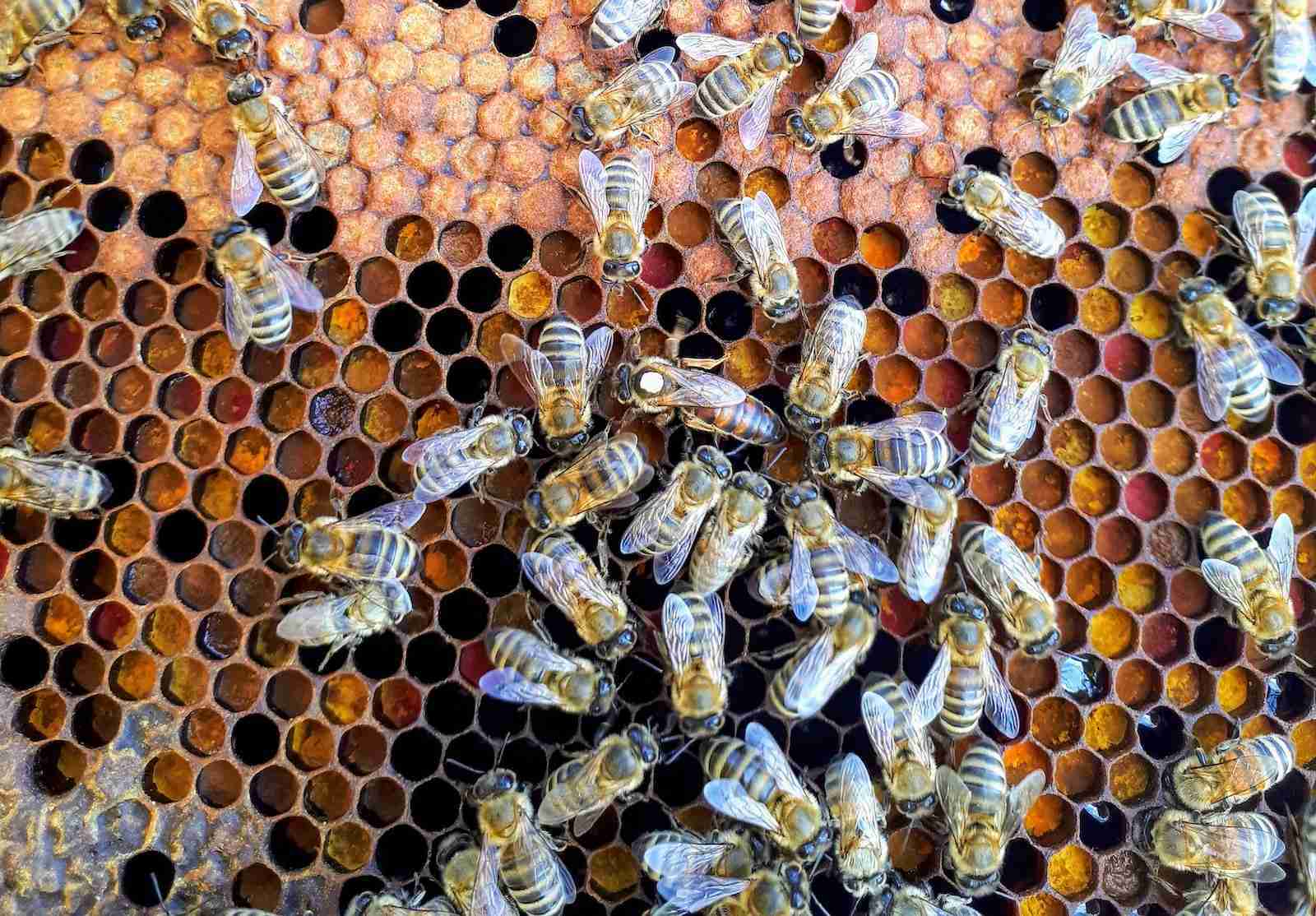26 Fun Facts About Bees | From Honey to Wonder
1. Bees have five eyes three small ocelli eyes and two larger compound eyes.
Did you know bees are quite the sight-seers? They don’t just have two or three, but five eyes.
There are three small ocelli eyes for sensing light and two larger compound eyes for detailed vision. Now, isn’t that one of the interesting fun facts about bees?
2. Bees communicate through a dance called the waggle dance.
Ever seen bees dancing? Yep, they’ve got moves. Bees communicate with each other using a unique dance called the waggle dance.
This dance is their way of telling their bee buddies where the best flowers are. Imagine if we humans could just dance out directions.
3. Bees can recognize human faces.
Bees showcase the ability to recognize and remember human faces. So, the next time you find yourself in a garden, keep in mind that these diligent workers could be acquainting themselves with you.
4. Bees fly at an average speed of 15 miles per hour.
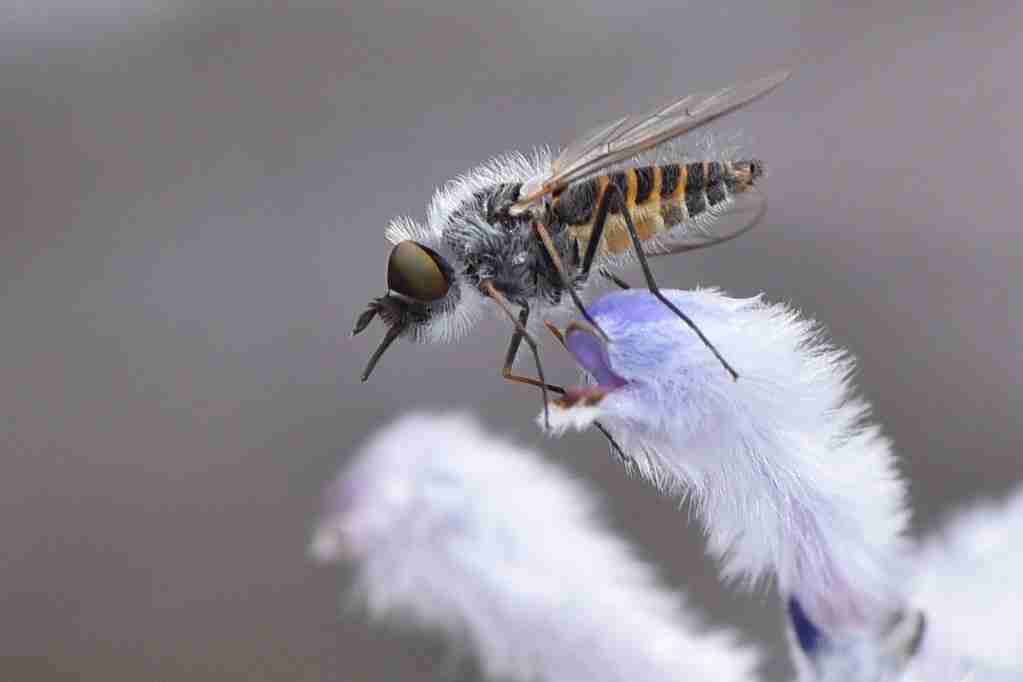
While we might not think of bees as speedsters, these tiny creatures can hustle. Bees fly at an impressive average speed of 15 miles per hour.
It’s not jet-speed, but for their size, it’s pretty quick.
5. Bees evolved from wasp-like ancestors around 100 million years ago.
Delving deep into history, fun facts about bees take us on a journey back in time. Bees didn’t always look or act as they do now.
Around 100 million years ago, their ancestors resembled wasps more than the bees we know and love today.
6. Bees’ wings beat 200 times per second.
Ever heard a bee buzz past you? That unmistakable sound comes from their wings, which beat incredibly fast.
How fast, you wonder? Try 200 times in a single second. It’s like the hummingbird version in the insect world.
7. Some bees are solitary, not living in colonies or hives.
When you think of bees, you might picture bustling hives and busy colonies. But, here’s a twist some bees love their alone time, Yep, there are solitary bees that prefer living alone rather than in groups.
They march (or buzz) to the beat of their own drum.
8. Male bees are called drones and they don’t have stingers.
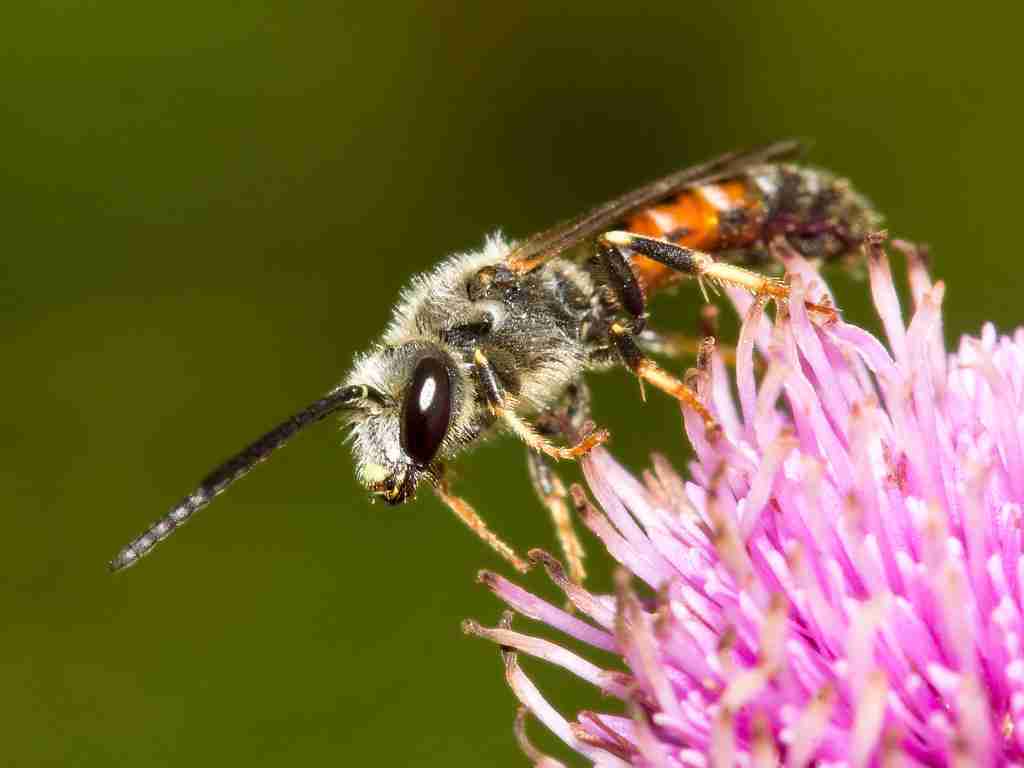
When we look at bee gender, something intriguing unfolds. Male bees, often called drones, have a different purpose.
What’s really interesting is that drones don’t have stingers. Instead, their focus is on romance rather than stinging.
9. Bees are capable of recognizing the number zero.
Think bees just buzz around without a thought? Think again! These tiny insects can understand the concept of the number zero.
Imagine, such a small creature grasping a concept that even ancient human civilizations took a while to figure out.
10. Bees have hairy tongues, which help them collect pollen and nectar.
Discovering the fascinating side of our buzzing pals, have you ever heard about bees and their hairy tongues? It’s not just some random thing.
These hairy tongues are like nature’s special tools, carefully made to help bees collect pollen and nectar from flowers.
11. Bees have two stomachs, one for eating and one for storing nectar.
When it comes to bees’ digestion, things take an interesting twist. Their digestive system includes a fascinating feature a dual-stomach setup.
They maintain one stomach dedicated to eating and a separate, specialized stomach for storing nectar. It’s almost like having an internal storage compartment exclusively for their treats.
12. In their lifetime, bees produce only about 1/12th of a teaspoon of honey.

Over their lifetime, a single bee dedicates its efforts to crafting a mere 1/12th of a teaspoon of honey, which amounts to roughly 0.08 grams.
This seemingly minuscule output showcases the sheer dedication and diligence that bees pour into their work.
Remarkably, when you combine the contributions of countless bees within a hive, the honey harvest can become a substantial delight.
13. The queen bee can lay over 3000 eggs in a single day.
In the intricate world of bee royalty, the queen bee emerges as an astonishing force of nature. Capable of laying over 3000 eggs in a single day, her prolificacy is a marvel.
This tireless dedication to reproduction ensures the colony’s survival and growth.
As she meticulously deposits eggs into carefully prepared cells, a hive’s population swells, forming the backbone of a thriving community.
14. Bees can see ultraviolet light, invisible to the human eye.
Here’s something cool while we humans can’t see ultraviolet light, bees can. This is among the intriguing fun facts about bees.
Their ability to see in ultraviolet helps them locate flowers and nectar more effectively, even if it’s invisible to our eyes.
15. Bees can die after stinging, as their stingers are often left behind.
Most of us are wary of bee stings, but did you know it’s a life-or-death situation for bees too? When they sting, they often leave their stingers behind, which can result in their death.
This sacrifice highlights how protective they can be of their colony.
16. There’s a species called the zombie bee that’s parasitized by a certain fungus.
In the world of bees, there’s a unique species known as the zombie bee. This bee faces an intriguing twist when it becomes a host to a specific fungus. The outcome? A somewhat eerie transformation that gives them their unsettling name.
This odd connection between the bee and the fungus triggers changes in the bee’s behavior, leading to a fate that’s both creepy and curiously fascinating.
17. Bees can be trained to detect bombs by recognizing the scent of the explosives.
Among the curious fun facts about bees is their potential role in security. Researchers have trained bees to detect bombs by recognizing explosive scents.
This is because of bees’ extraordinary sense of smell, which can be harnessed for safety measures.
18. Bees sometimes get drunk on fermented nectar and are not allowed back in the hive.
Bees enjoy nectar, but sometimes they encounter its fermented version and get drunk. When this happens, sober hive guards prevent these intoxicated bees from entering the hive, ensuring the safety and order of their home.
It’s nature’s own version of a bouncer at the door.
19. The smallest bees are just 2 mm long, while the largest can be 4 cm.
When it comes to size, bees can vary dramatically. The tiniest ones, called Perdita minima, are just 2 mm long.
On the other hand, the giant honey bee, Apis dorsata, can measure up to a whopping 4 cm. It’s fascinating to see such a size range in the bee world.
20. Bees can experience a type of sleep and even dream.
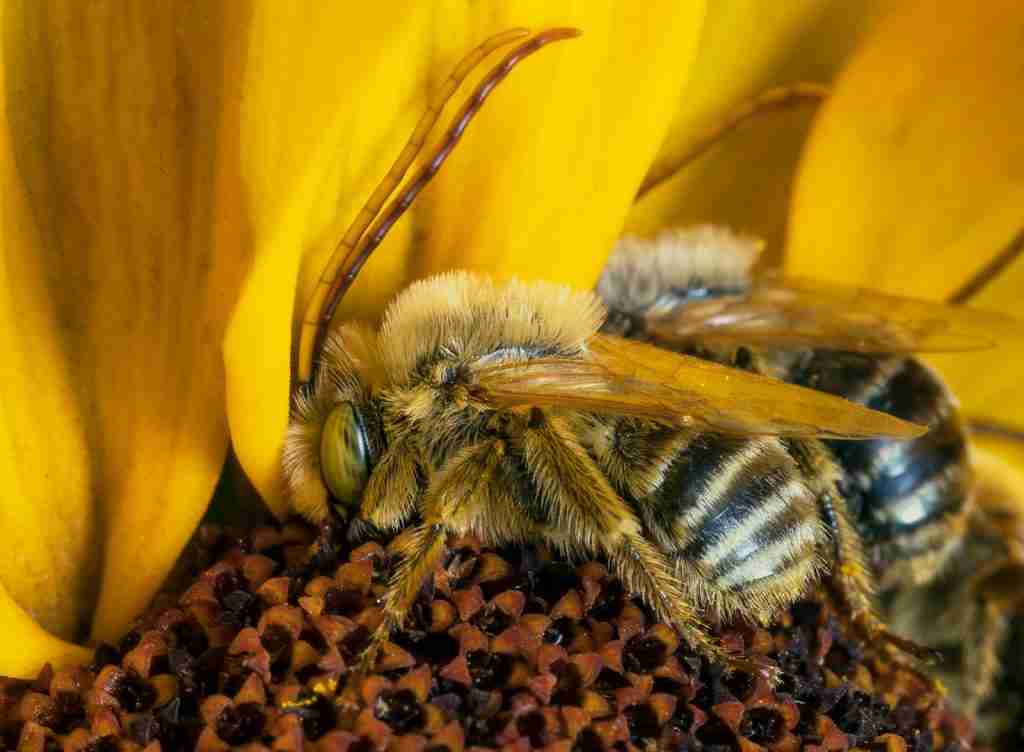
Bees don’t just buzz and work they also take breaks to rest. During their sleep, they exhibit patterns similar to the REM phase humans experience, which is typically associated with dreaming.
While it’s a fun fact about bees that sparks our imagination, it’s crucial to remember we don’t know what these dreams might entail or if they are dreams at all in the way we understand them.
21. Bees are more attracted to blue and violet flowers.
If you’ve got blue or violet flowers in your garden, you’ve likely noticed more bee visitors. That’s because bees have a natural attraction to these hues.
It’s a colorful and delightful insight into their world.
22. Bees have the remarkable ability to count up to the number 4.
In the world of bees, there’s an unexpectedly clever talent counting up to the number 4. Yes, you read that right. These industrious little insects can keep track of quantities, and their sweet spot is up to the number 4.
It’s like having a built-in tally system for their tiny flower visits. From one to two, three, and four, bees show off their numerical prowess in their own buzzing way, proving that there’s always more to learn about these incredible creatures.
23. Bees have been found on every continent except Antarctica.
Explorers and scientists have documented various species all around our globe, but there’s one place where bees are notably absent in Antarctica.
Among the myriad of fun facts about bees, their universal presence on every other continent stands out, showcasing their adaptability and resilience.
24. The honeybee is the only insect that produces food humans eat.
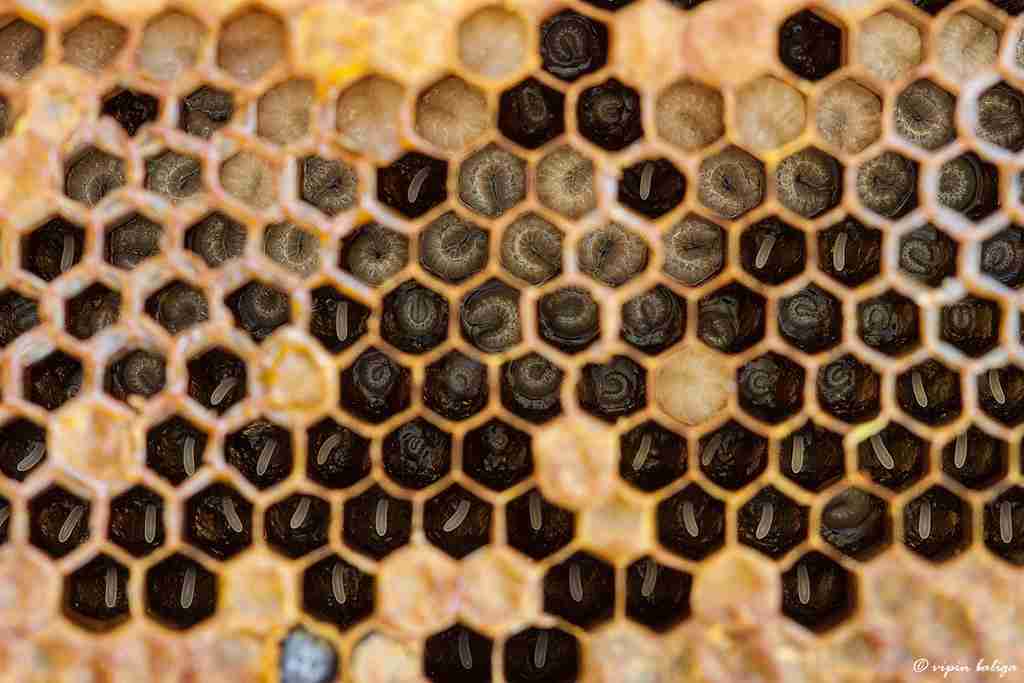
The honeybee holds a unique accolade in the insect kingdom. It’s the only insect that produces food consumed by humans, honey.
This delicious, golden treat is just another testament to their invaluable role in our ecosystem.
25. One of the fun facts about Bees is that Bees help pollinate over 70% of the world’s crops.
Our meals often owe a silent thank you to bees. Delving into fun facts about bees, it’s staggering to learn that they play a part in the pollination of over 70% of the world’s crops.
From fruits to nuts and many vegetables, bees contribute significantly to global food production.
26. The buzz of bees is made by their wings, not their vocal cords.
When you hear that familiar buzz around flowers, remember, it’s not bees singing. That buzzing actually comes from their wings flapping really fast.
What’s interesting is that bees don’t have vocal cords like we do.
FAQs
Most bee species, especially honeybees, are diurnal, meaning they’re active during the day and rest at night. However, there are some species of bees, known as nocturnal bees, that are active during the night. These bees have evolved to forage in the dark, and they often have special adaptations, like larger eyes, to help them navigate during nighttime.
Worker bees might eliminate their queen in circumstances where she’s perceived as weak or failing, especially if she’s not producing enough pheromones or laying eggs effectively. Additionally, when new queens emerge in the hive, there can be duels until only one queen remains. Sometimes, if an outside queen attempts to invade and the colony accepts her, they may also dispose of the current queen.
Bees make honey by collecting nectar from flowers. Once they return to their hive, they regurgitate the nectar, allowing it to evaporate and thicken. This transformed substance is then stored in honeycombs, serving as a vital food source for the colony, especially during times when floral resources are scarce.
Female bees, particularly worker honeybees, possess stingers and will use them when threatened. Male bees, known as drones, do not have stingers. While honeybee workers can sting only once and then die, some other bee species can sting multiple times without perishing.
Bees are essential for pollinating a significant portion of our food crops, supporting about one-third of what we eat. Their pollination also benefits wild plants, maintaining diverse ecosystems and habitats for other species. Additionally, they provide valuable products like honey and wax.

